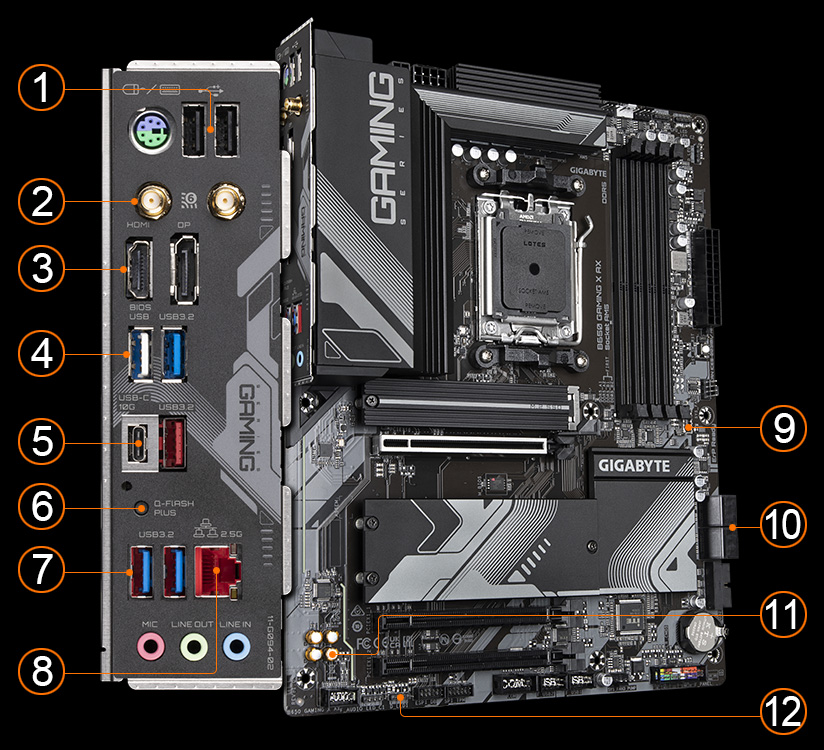
Gigabyte B650 Gaming Motherboard: Booting from USB Guide
Are you looking to boot your Gigabyte B650 gaming motherboard from a USB drive? Look no further! In this comprehensive guide, we will walk you through the step-by-step process of booting your motherboard from a USB device. Whether you want to install a new operating system, update your BIOS, or run diagnostics, booting from USB can be a convenient and efficient method. With our detailed instructions and tips, you’ll have your Gigabyte B650 gaming motherboard booted from USB in no time.
Before we dive into the process, let’s quickly understand why booting from USB can be beneficial. USB booting allows you to bypass your computer’s internal storage and directly load an operating system or other software from an external device. This can be particularly useful when you need to troubleshoot your system, recover data, or perform a clean installation. Additionally, USB booting provides flexibility as you can easily switch between different operating systems or test new software without making permanent changes to your internal storage.
1. Checking Compatibility
In this section, we’ll discuss the compatibility requirements for booting your Gigabyte B650 gaming motherboard from a USB drive. We’ll guide you on how to ensure your motherboard supports USB booting and which USB devices are compatible.
2. Creating a Bootable USB Drive
Here, we’ll provide you with detailed instructions on how to create a bootable USB drive using various methods. From using built-in tools like Windows Media Creation Tool to third-party software like Rufus, we’ll cover it all.
3. Configuring BIOS Settings
This section will guide you through the necessary BIOS settings to enable USB booting on your Gigabyte B650 gaming motherboard. We’ll explain the steps to access the BIOS menu and make the required changes for a successful boot from USB.
4. Verifying Boot Priority
Ensuring the correct boot priority is crucial for a successful USB boot. Here, we’ll show you how to verify and adjust the boot priority settings on your Gigabyte B650 gaming motherboard, allowing your system to recognize the USB drive as the primary boot device.
5. Troubleshooting USB Boot Issues
If you encounter any issues while booting from USB, don’t worry! In this section, we’ll cover common problems and their solutions. From USB drive not detected to boot failure, we’ll provide troubleshooting tips to help you overcome any obstacles.
6. Installing an Operating System from USB
Ready to install a new operating system? We’ve got you covered. This session will guide you through the process of installing popular operating systems like Windows, Linux, or macOS from a bootable USB drive using your Gigabyte B650 gaming motherboard.
7. Updating BIOS via USB
Keeping your motherboard’s BIOS up-to-date is essential for optimal performance and compatibility. Here, we’ll explain how to update your Gigabyte B650 gaming motherboard’s BIOS using a USB flash drive and minimize the risk of any complications.
8. Running Diagnostics from USB
In this section, we’ll explore how to run diagnostics on your system using bootable USB tools. Whether you want to test your hardware, scan for malware, or recover data, we’ll recommend popular diagnostic tools and guide you on their usage.
9. Switching Between USB Boot and Internal Storage
Looking to switch back to your internal storage after booting from USB? We’ll explain the steps to switch between USB boot and internal storage on your Gigabyte B650 gaming motherboard, ensuring a seamless transition.
10. Best Practices and Precautions
Lastly, we’ll provide you with some best practices and precautions to follow when booting your Gigabyte B650 gaming motherboard from USB. These tips will help you avoid potential errors and ensure a smooth experience every time.
In conclusion, booting your Gigabyte B650 gaming motherboard from a USB drive is a versatile and powerful feature that allows for various operations, from installing operating systems to running diagnostics. By following the steps and tips outlined in this guide, you’ll be able to harness the full potential of your motherboard’s USB booting capabilities. Remember to check compatibility, create a bootable USB drive, configure BIOS settings, and troubleshoot any issues that may arise. With this comprehensive guide at your disposal, you can confidently navigate the process and unlock a world of possibilities.